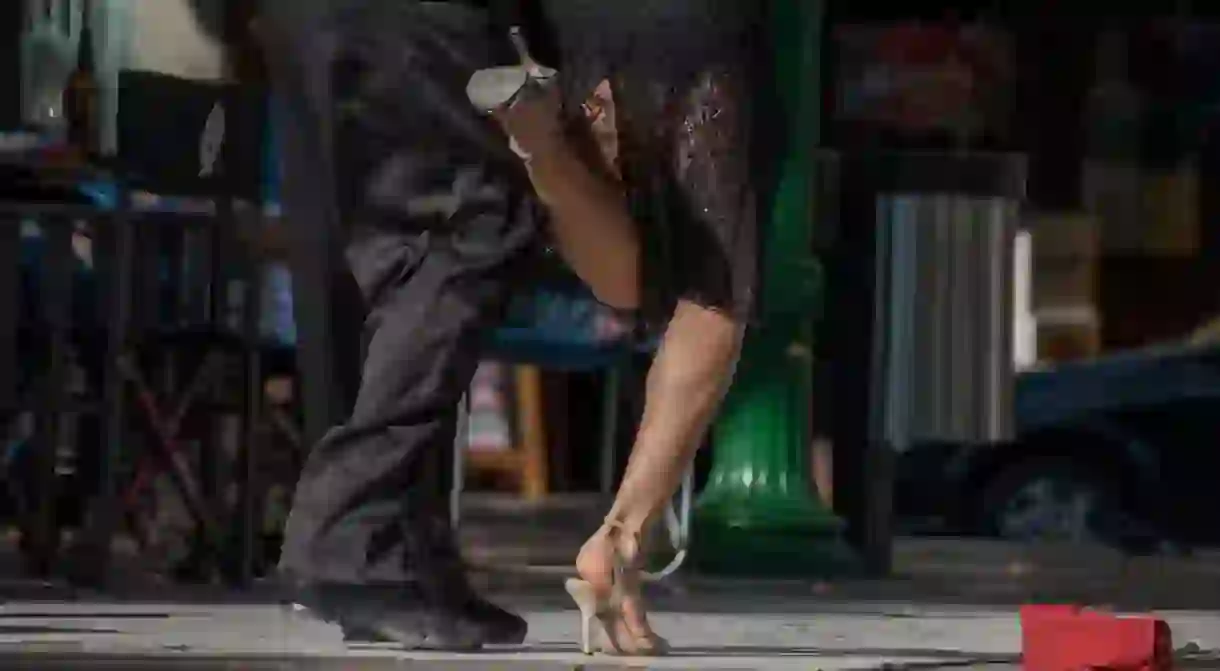A Brief Introduction to Milonga, Tango's Quick-Footed Cousin

Milonga is a multi-faceted word in Argentina, rather fitting when discussing dance. While milonga and tango look similar and and are often danced together, they are distinct from one another. Read on for an introduction to this fast-paced cousin to tango.
First and foremost, “milonga” refers to a dance form that emerged out of the lower classes in the region in the late 19th century, but it also refers to going to dance tango as a group; this can be confusing as people generally go to a milonga to dance tango, although the milonga dance often does appears in between sets of tango. To further muddy the waters, the word has slang use as well: the Argentine expression “la vida es una milonga” (literally, “life is a milonga”) means life’s full of drama.

While some scholars believe milonga pre-dates tango, it remains unclear which dance came first, though Cuban “habanera” is considered the principal forerunner. This dance was born in brothels and boarding houses in immigrant-heavy port areas of Argentina and Uruguay, and it took years for milonga to be accepted in Argentina. Characterized by its then-scandalous physical proximity between partners, milonga fused European and Afro-Caribbean musical influences into a dance form much like tango, both of which became popular worldwide.
What distinguish milonga from tango are its style and rhythm. Milonga is less complex (though there are numerous milonga styles, some more complicated than others), yet it’s also faster paced ( a legacy of the habanera’s rapid beat). This means milonga dancers take smaller steps more rapidly than with tango. They also hold their bodies differently: while both dances require close proximity beween partners, milonga is looser, choppier, more earthy—less languid and fluid than tango.

“If dancing tango takes you to the depths of your soul, dancing milonga brings you to a happy place,” writes Sasha Cagen, a tanguera (tango dancer) who loved tango so much she moved from California to Buenos Aires, where she runs a tango immersion program called Tango Adventure.
“Whereas tango has a lot of drama and passion in the dance, dancing milonga feels a lot more light. You can’t think for a moment when you dance a milonga, because the music takes over and you are moving in unison with your partner at such a fast pace,” says Cagen.

Milonga was not always so widely appreciated, of course. The dance was considered disreputable by the upper classes as much for its roots in marginalized communities as for the intimacy of the dance itself. Watching people dancing milonga or tango is almost like watching a moving hug. Partners hold each other much closer than was socially permitted at the time, suggesting an eyebrow-raising degree of sexual intimacy to the “respectable” set.
These days, milonga and tango are danced the world over and are considered part of Argentina’s cultural heritage. Like the nation in which it arose, milonga was born in a creative tumult of culture that saw different ethnicities and traditions come together in new pleasures, new families, and new beginnings. The beautiful dance is a must-see when visiting Buenos Aires and Argentina.













